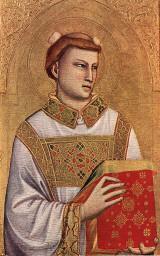Italy has a host of top shows lined up for 2009, with organizers hopeful that the popularity of Futurism and the perennial allure of star names like Giotto and Raphael will help reverse last year's falling ticket sales.
Fans of Futurism will be spoiled for choice over the next 12 months, as galleries and museums across Italy celebrate 100 years since the movement was launched by Filippo Tommaso Marinetti in February 1909.
The brilliant, vibrant energy of Futurism ensures its continued place as Italy's most popular 20th-century art export, and exhibits are planned in Rome's Quirinale (from February 20), the Trento Museum of Modern and Contemporary Art in Rovereto (from January 17) and Venice's Correr Museum (from June 5).
The focus of the celebrations will be in Milan, however, which has 100 Futurist events planned for the year, including three major exhibitions.
Outside the Futurist celebrations, organizers are banking on Italy's art giants to boost sales.
Rome's Vittoriano will explore the genius of Giotto, with an exhibition of rare 14th-century paintings by the father of the Renaissance, opening on March 6.
Florence will pay tribute to sculptor Gian Lorenzo Bernini, with an exhibition charting the links between his marble masterpieces and the birth of Baroque portraiture, from April 3 in The Bargello.
The Galleria Borghese in Rome will offer visitors an unusual comparison between the works of Caravaggio (1571-1610) and Francis Bacon (1909-1992). Although separated by four centuries, the event will consider the similar ideals that drove both artists and the dark underside to their work.
Raphael will be the focus of an exhibition planned for Urbino this spring, looking at the lifelong relationship between the Renaissance master and his eastern Italian birthplace through 40 works.
The small town of Forli' in Emilia Romagna will examine ties between Antonio Canova (1757-1822) and international neoclassical art, as well as considering the sculptor's influence on other artists. Opening at the end of this month, the exhibition will feature 160 artworks, including paintings by Titian and Raphael.
Most of Italy's main exhibits will hope to draw visitors with individual names but a clutch of shows will instead focus on more general areas of interest.
A Florence event opening in March will look at the discoveries of Tuscan astronomer, physicist and mathematician Galileo Galilei, while Rome's Palazzo delle Esposizioni will offer visitors a comprehensive overview of work by Charles Darwin, on the second centenary of the English naturalist's birth.
Trento's Castello Buonconsiglio will host a collection of valuable ancient Egyptian artefacts discovered by the renowned Italian Egyptologist Ernest Schiaparelli. Although discovered decades ago, the Trento exhibit at the end of May will mark the collection's first public display.
Ticket sales to Italy's major exhibits fell sharply in 2008 as the credit crunch took hold. Sector workers say sales dropped to levels of a decade ago, before the craze for big-name art shows took off at the end of the 1990s.
The final event in a three-stage exhibition initiative in Brescia, 'America', sold just 203,000 tickets compared to its predecessors on William Turner and Paul Gauguin/Vincent Van-Gogh, which sold 350,000 and 550,000 tickets respectively.
The Turner exhibit was the top-selling exhibit of 2007, while the best seller of 2008, a Rome show on Gauguin, attracted over 100,000 fewer people, with just 243,200 tickets.









